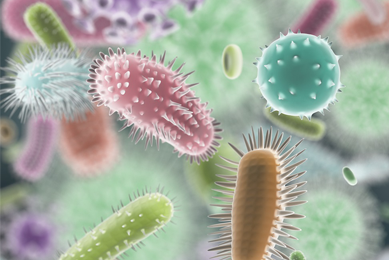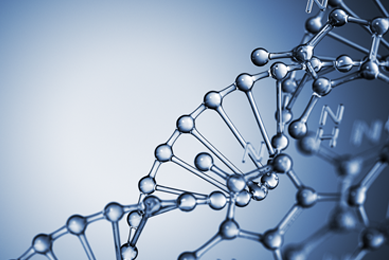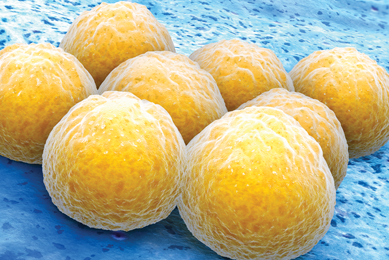Why it’s important
As humans, we are never truly alone—our bodies are home to a diverse group of microorganisms known as the microbiome. While advancements in next-generation sequencing technology have improved our understanding on the role of the microbiome in human health and disease, the complexities associated with each step of the workflow have challenged assay standardization. Biases can be introduced at any stage throughout the workflow—from sample collection to data analysis—which can then influence subsequent results and conclusions.
For example, take the initial workflow steps of sample collection and DNA extraction in skin microbiome studies. Here, samples are collected through methods such as swabbing, tape-stripping, biopsy, or scraping.1,2 In a recent study by Ogai et al, the group analyzed the microbial composition between samples that were collected using the tape-stripping and swabbing methods to observe if there were any differences when performing next-generation sequencing and culture studies.1 Through their analysis, they discovered that while the bacterial composition collected was comparable between the two collection methods in their next-generation sequencing study, the tape-stripping method collected more viable bacteria than the swabbing method during the culture study.
In a similar study by Bjerre et al, swabbing and scraping sample collection methods as well as twelve different DNA extraction kits were evaluated.2 Here, the team discovered that while the microbial populations captured using the two sample collection methods exhibited comparable sequence overlap, the swabbing method had higher consistency. When comparing the DNA extraction kits, the group observed that the choice of kit affected the observed microbial profiles and quantity of host DNA present. They also noted that four of the extraction kits performed poorly and had low rates of successful library preparation.2
These studies demonstrate that the differences in the very first steps of the workflow can lead to data variation. When additional steps are added to the process, the inherent complexities of each subsequent step can further compound the biases introduced throughout the workflow, which could lead to varying conclusions depending on the methods used. Optimization at each step of the metagenomic workflow is therefore important for obtaining a clear understanding of species composition and abundance within a microbial community.
What’s the solution?
Many researchers have begun to use mock microbial communities as standards to help identify biases introduced throughout the workflow.3,4 A 2018 study by Yeh et al, for example, reported that their use of mock community standards enabled them to identify highly aberrant and strong biases in their sequencing runs that would have otherwise been disregarded as natural sample variation.3 Similarly, Abellan-Schneyder et al demonstrated the use of mock microbial communities in evaluating primer sequence choice, clustering methods, reference database, and analysis parameters.4 In these studies, the researchers highlighted the value of incorporating standards in their study design to identify potential biases and recommended that the mock microbial communities used should have known composition and adequate complexity.
How we can help
To support the optimization of next-generation sequencing workflows, ATCC provides NGS Standards comprising fully sequenced, characterized, and traceable mock microbial communities. These standards are provided in a variety of formats and levels of complexity to help challenge the standardization process. The robust applicability of these controls combined with ATCC’s commitment to authentication and characterization make NGS Standards a valuable tool to support standardizing data from a wide range of sources and generating consensus among microbiome applications and analyses.
Did you know?
The human microbiome contains between 10-100 trillion microorganisms and weighs up to 2-5 pounds.
Microbiologist
Cara Wilder, PhD, ELS
Senior Scientific Writer, ATCC
Dr. Wilder is a Senior Scientific Writer at ATCC. She has a PhD in Microbiology with background experience working with several pathogenic bacterial species in both in vitro and in vivo environments. Dr. Wilder is the author of numerous publications on varying topics of scientific relevance, including quality control, microbial contamination, assay development, proficiency testing, and multidrug resistance.
Dig into standards for microbiome research

Microbiome Research
ATCC's NGS standards for microbiome research are completely manufactured from high-quality, authenticated, fully sequenced ATCC cultures that are characterized by polyphasic testing. These standards support a broad array of applications ranging from method optimization to data interpretation, and they serve as superior controls for microbial community testing and assay development on any platform.
More
NGS Standards
Discover how NGS Standards can enable you to optimize your diverse research applications with confidence and improve the consistency and reproducibility of your data run after run.
More
Microbial Community Profiling
NGS Standards enable you to optimize your diverse microbiome research applications with confidence and improve the consistency and reproducibility of your data run after run. These standards support a broad array of applications ranging from method optimization to data interpretation, and they serve as superior controls for microbial community testing and assay development on any platform.
MoreReferences
- Ogai K, et al. A Comparison of Techniques for Collecting Skin Microbiome Samples: Swabbing Versus Tape-Stripping. Front Microbiol 9: 2362, 2018. PubMed: 30333815
- Bjerre RD, et al. Effects of sampling strategy and DNA extraction on human skin microbiome investigations. Scientific Reports 9(1): 17287, 2019. PubMed: 31754146
- Yeh YC, et al. Taxon Disappearance from Microbiome Analysis Reinforces the Value of Mock Communities as a Standard in Every Sequencing Run. mSystems 3(3): e00023-18, 2018. PubMed: 29629423
- Abellan-Schneyder I, et al. Primer, Pipelines, Parameters: Issues in 16S rRNA Gene Sequencing. mSphere 6(1): e01202-20, 2021. PubMed: 33627512